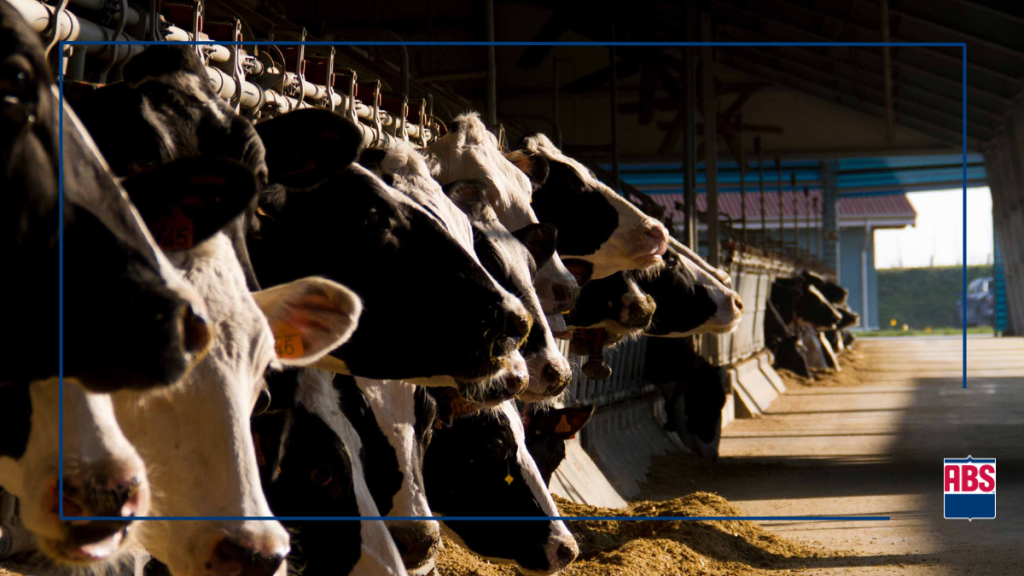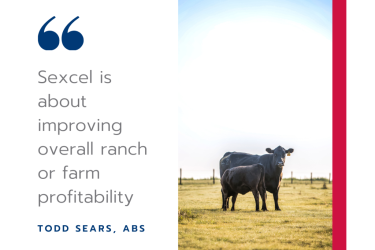Publish date: 5.7.25
Some herds, and even genetics companies, have chosen to chase fewer genetic lines, meaning a short list of sires appears in their genetic plan. Focusing only on one elite genetic line, without any thought of diversity, increases the risk of future challenges, including ones that often come from inbreeding. Thus, balancing both is imperative, which is why ABS strives to offer a lineup with genetic superiority and diversity.
What is Genetic Diversity?
Genetic diversity is the number of different bloodlines used within a customer’s herd or a genetics company’s breeding program. It is determined by the number of different sires, maternal grandsires, and maternal great grandsires of bulls used in a breeding program.
Why is Genetic Diversity Becoming More Important to Watch?
- The average dairy herd size is increasing, meaning the need to use a bigger team of bulls on a dairy is becoming necessary.
- The shift to using genomic bulls over proven continues, amplifying the need to use a greater number of bulls again due to the slightly lower reliability of genomic sires.
- The adoption of genetic protection is changing the industry, making the days of a stud using someone else’s best bulls to create their sires virtually nonexistent.
Limited genetic diversity within other AI studs is giving ABS a competitive advantage in this space.
The Importance of Balancing Consistency and Diversity
Balancing consistency and diversity in ABS sires is important to ensure we have the genetics that will help our customers reach their goals and avoid risks from inbreeding. Consistency of sires in our genetic plan allows you to create a more uniform herd for priority traits, increasing herd performance and profitability, but there is also a need for diversity.
Why Does the Diversity of Sires Used in Our Genetic Plan Matter?
- It minimizes the risk of any single sire reranking or dropping significantly. A single bull can drop more than expected as more data becomes available, so tying ourselves or customers to a specific bull or sire line can intensify the effect. Today, using four genomic sires creates a bull group average of 95% Reliability, which is the same level as those highly proven sires who were coveted 15 years ago, and minimizes the risk of any single sire reranking!
- It maximizes pregnancy production by lessening fertility influences. Bulls are biological creatures, and even with tight lab and process controls, there are differences in semen fertility. By using more sires, we lessen the overall fertility influence of a particular bull and spread out breedings over more semen collection days. This helps producers avoid putting their herd’s proverbial eggs in one basket for creating calves!
- It reduces the potential of uncovering hidden haplotypes. Every animal, even a human, carries half a dozen individual genetic defects. While not concerning by itself, concerns arise when a sire becomes popular and prominent in a breed—the curse of popularity. It only takes a few generations before a popular sire’s offspring inadvertently get mated to each other, and hidden haplotypes are uncovered. Genetic diversity minimizes the impact of individual recessives!
Ensure Diversity in Your Genetic Plan
It is recommended to incorporate four to six sires in your genetic plan for each Sire Summary, with no more than two having the same sire. This ensures adequate genetic diversity to minimize genetic reranking, future haplotype exposure, and potential semen fertility impacts. Ask the ABS Genetic Services team to help you manage genetic diversity.
Thus, we suggest viewing a genetic portfolio like you would a financial one. Choosing the right investments is critical for a profitable future. There will always be unknown volatility, but the diversity of ABS sires helps you achieve consistent and increased profitability with less worry about reranking, fertility impacts, or haplotypes.
For more information about genetic diversity, contact your ABS Genetic Advisor or complete the form below.







